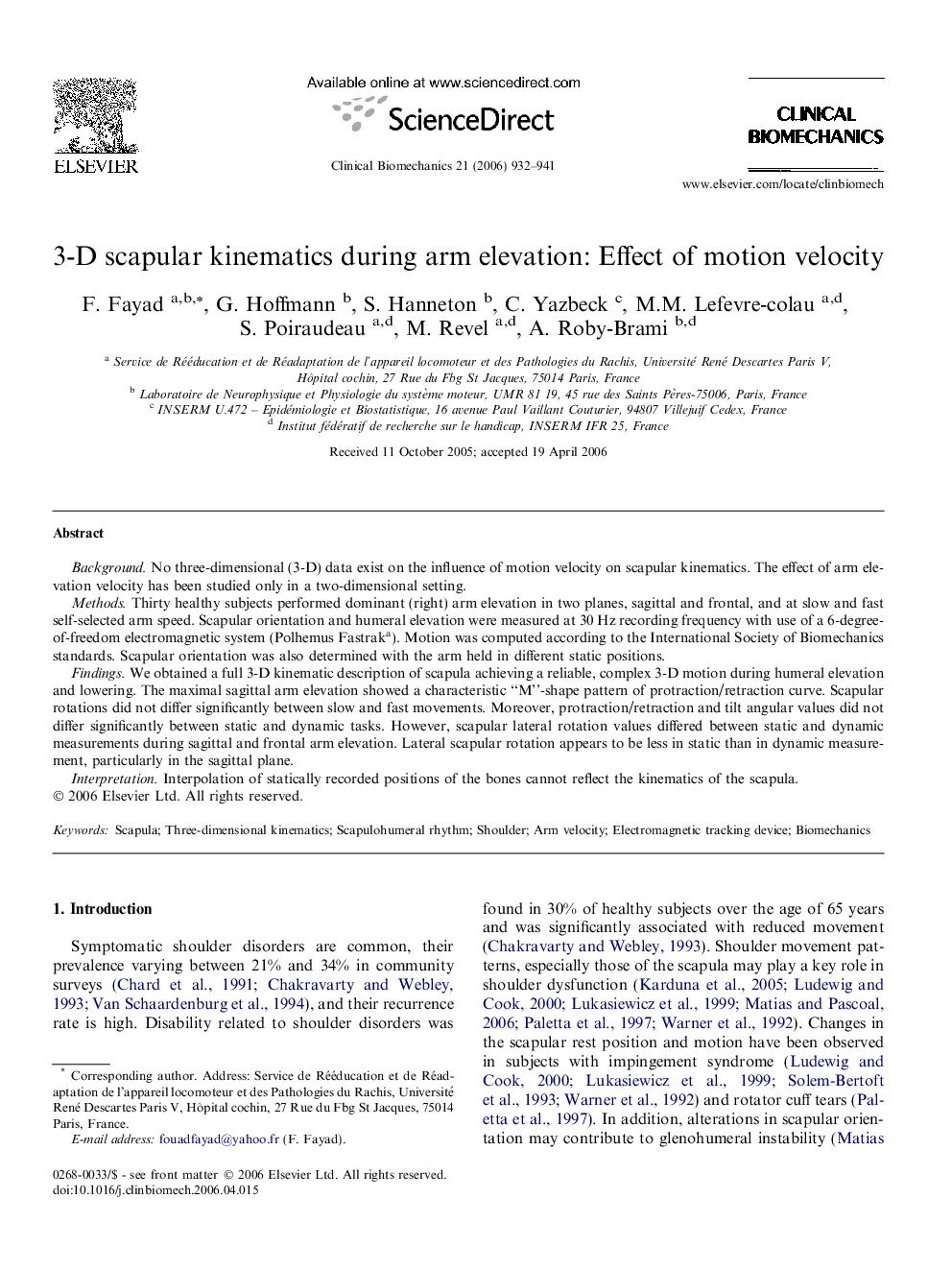| Article ID | Journal | Published Year | Pages | File Type |
|---|---|---|---|---|
| 4051347 | Clinical Biomechanics | 2006 | 10 Pages |
Background. No three-dimensional (3-D) data exist on the influence of motion velocity on scapular kinematics. The effect of arm elevation velocity has been studied only in a two-dimensional setting.Methods. Thirty healthy subjects performed dominant (right) arm elevation in two planes, sagittal and frontal, and at slow and fast self-selected arm speed. Scapular orientation and humeral elevation were measured at 30 Hz recording frequency with use of a 6-degree-of-freedom electromagnetic system (Polhemus Fastraka). Motion was computed according to the International Society of Biomechanics standards. Scapular orientation was also determined with the arm held in different static positions.Findings. We obtained a full 3-D kinematic description of scapula achieving a reliable, complex 3-D motion during humeral elevation and lowering. The maximal sagittal arm elevation showed a characteristic “M”-shape pattern of protraction/retraction curve. Scapular rotations did not differ significantly between slow and fast movements. Moreover, protraction/retraction and tilt angular values did not differ significantly between static and dynamic tasks. However, scapular lateral rotation values differed between static and dynamic measurements during sagittal and frontal arm elevation. Lateral scapular rotation appears to be less in static than in dynamic measurement, particularly in the sagittal plane.Interpretation. Interpolation of statically recorded positions of the bones cannot reflect the kinematics of the scapula.
